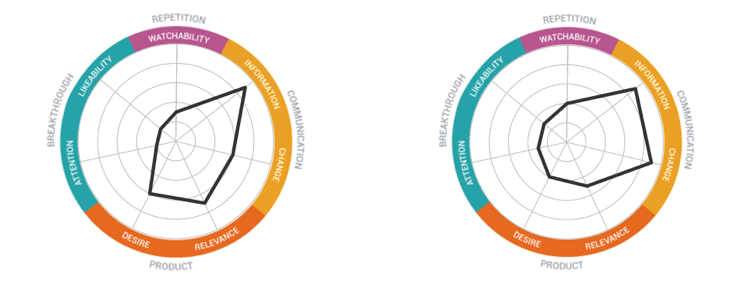Recently, TrueCar announced its Pledge to Dealers, vowing to make the new and used car shopping site a more positive place for dealers. In the past, TrueCar has been said to alienate dealers with its focus on price, which may have hurt dealer profitability and overly complicated the financial aspects of the process from the the dealer’s perspective. TrueCar’s recent pledge is designed to treat dealers like the customers they really are and to make the process of buying a car more balanced for both the buyer and the dealer.
An initial step toward making the pledge a reality was to re-edit an existing spot that highlighted the end consumer benefits of using TrueCar. The initial spot “Quick & Easy”, which ran in August 2014, discussed the ease of using TrueCar compared the hassles of haggling with dealers over price. “I’d rather do anything else than sit at a dealership,” said one of the characters in the ad. The recent re-edit, “Easy Car Buying”, which ran in March of this year, removed all mentions of unfavorable dealer experiences and focused instead on the ease and simplicity of using TrueCar.
So how did the consumer audience react to these two versions? The revised ad, without the dealer mentions, scored above norm but the original ad actually scored higher. In fact, the original had an Ace score of 623, significantly higher and 13% above the Automotive Services norm. The revised ad scored 568, a mere 3% higher than the norm.
|
ad title |
brand |
category |
air date |
score(s) |
|
Quick & Easy |
TrueCar.com |
Automotive Service |
08.18.2016 |
623 |
|
Easy Car Buying |
TrueCar.com |
Automotive Service |
03.22.2016 |
568 |
As the Ad Personalities below show, both ads scored well on Information. The ads shared the same message, focusing on the ease and simplicity TrueCar brings to the shopping and buying process. However, the original spot, the one that spoke of the hassles of the buying process and dealers, scored higher on Desire and Relevance. The ad was more relatable to the consumer experience and created the desire to use the product, in this case TrueCar as an alternative to the dealer. By losing ground on Desire and Relevance, as the second ad did, an automotive brand often loses ground on the desired call to action of visiting the website and searching for a car.
Ad Personalities
“Quick & Easy” – August ‘14 “Easy Car Buying” – March ‘16

The original ad clearly took advantage of one of TrueCar’s key differentiators, that of simplifying the process and minimizing the presumed hassles of interacting with the dealer. In fact, 24% of viewers named the message of this ad as the Single Best Thing. By avoiding this comparison in the revised ad, TrueCar’s advantages were less clear, limiting its ability to differentiate itself and running the risk of commoditizing itself with other 3rd party shopping sites. In the revised ad, 25% of viewers named the visual scenes the best thing about the ad, followed by the message at only 17%. The change in focus resulted on viewers honing in on different aspects of the ads.
Consumer reaction to the ads supported the notion that viewers connected on the image of the dealer in the first ad. In comments for the original ad, there were more dealer mentions, highlighting how TrueCar minimizes and even eliminates those hassles.
The revised ad elicited fewer mentions of the dealership and the relationships people have with them. The comments that were made focused on the importance of the dealer in negotiating, potentially, minimizing the impact of TrueCar.
Another sign that consumers connected to the original spot is its lower Polarity Score. With a 44, the original saw some disagreement among viewers, though not as much as the newer version which had 52 Polarity Score. There was much more agreement among viewers on the ad disparaging dealers, once again putting TrueCar in a tight spot trying to serve two customer bases.
The idea behind the revised ad is to strike a balance between the end user AND the dealers. However, it didn’t differentiate TrueCar to the same extent as the original ad. Focusing on negative dealer experiences will alienate that very important customer base, those dealer partners on the front lines executing on TrueCar’s promise. So what is the right mix of diplomacy that conveys TrueCar’s ability to simplify the shopping process?
There is no doubt there are many potential headaches associated with buying a new or used vehicle. And yes, the dealer can be one of those pain points. But beyond that, there are the hassles associated with comparing multiple vehicles, of determining features and options, the decision to buy or lease and even whether one should purchase a used vehicle report. TrueCar helps simplify the process by providing access to information on those topics and more. If simplicity and ease is TrueCar’s main benefit, it needs to be overtly compared to alternative resources. That’s what made the original ad so effective and relatable for consumers. Just leave the dealer out of it this time.